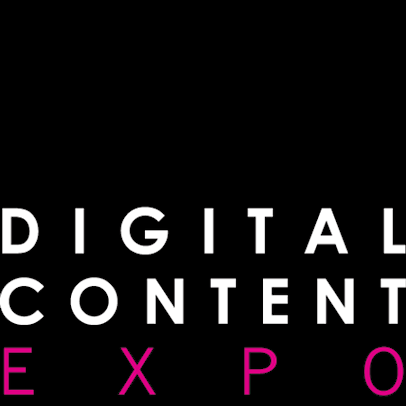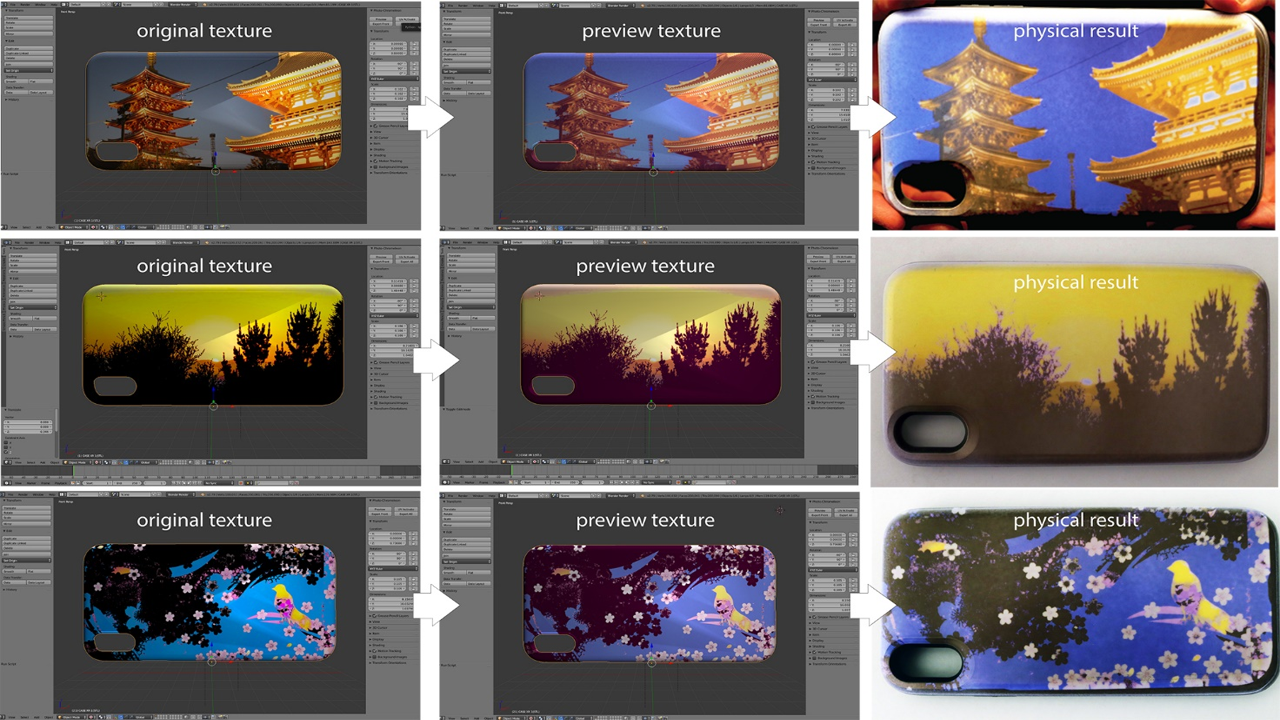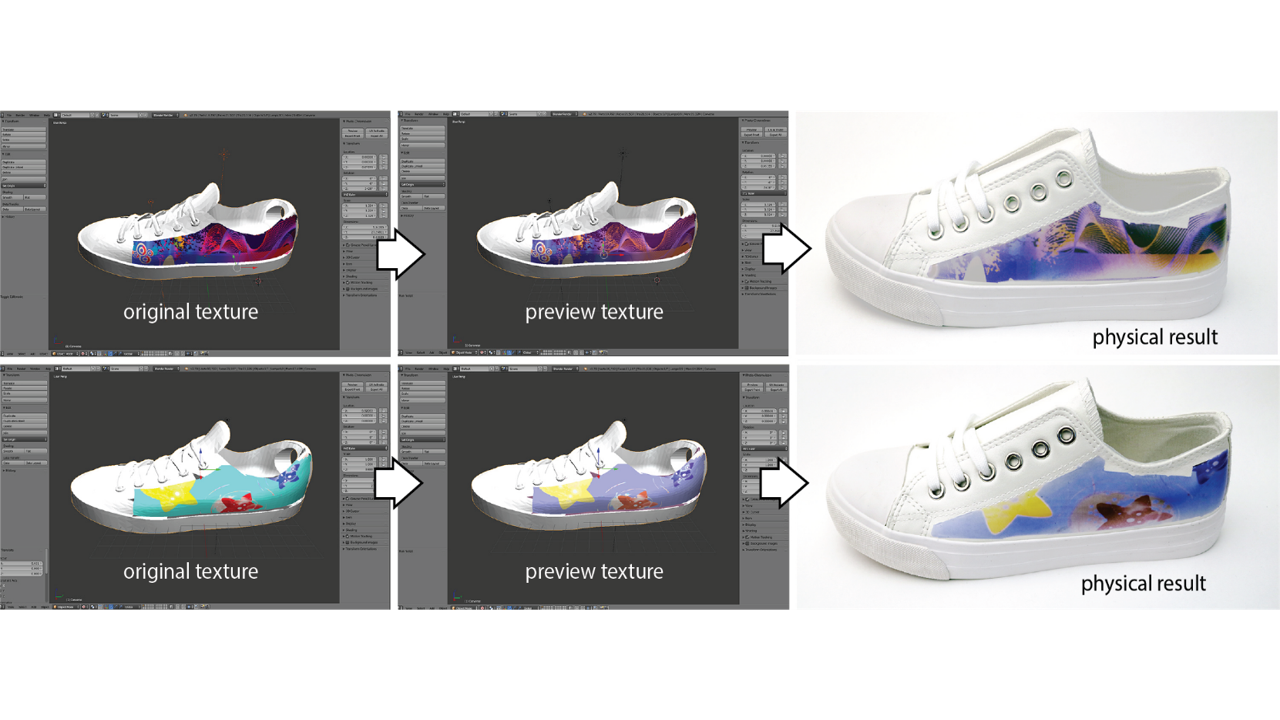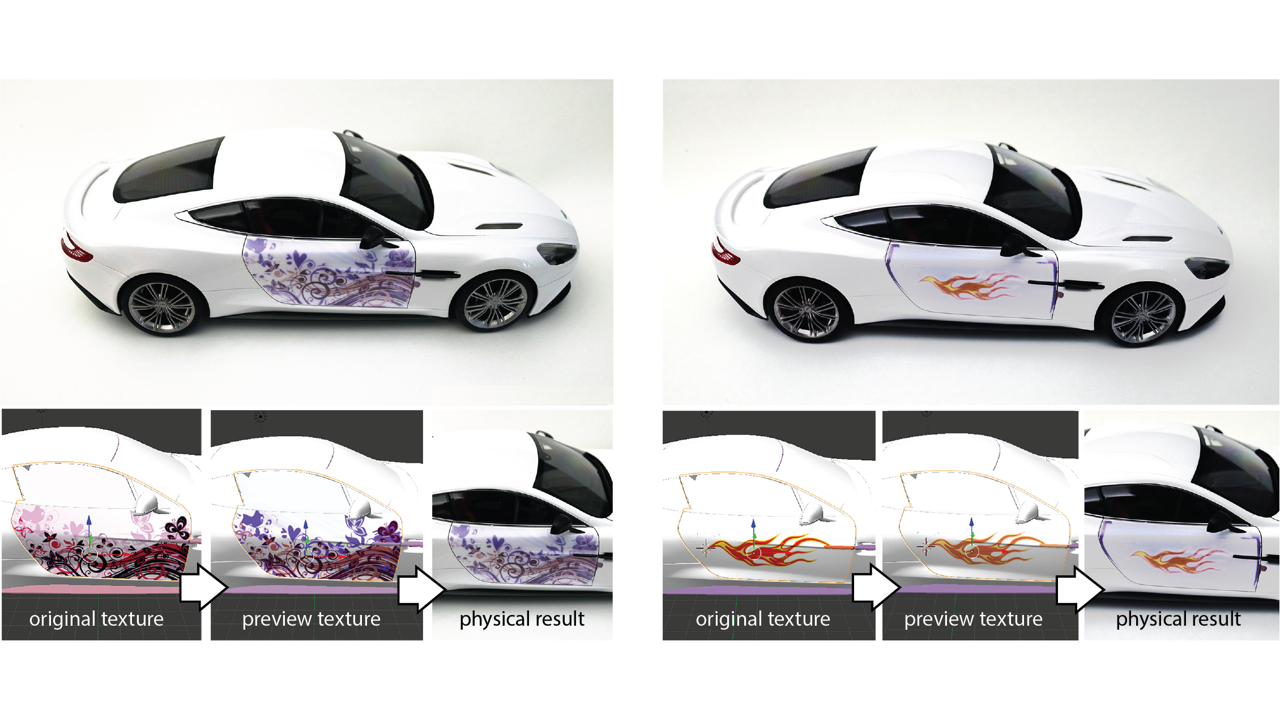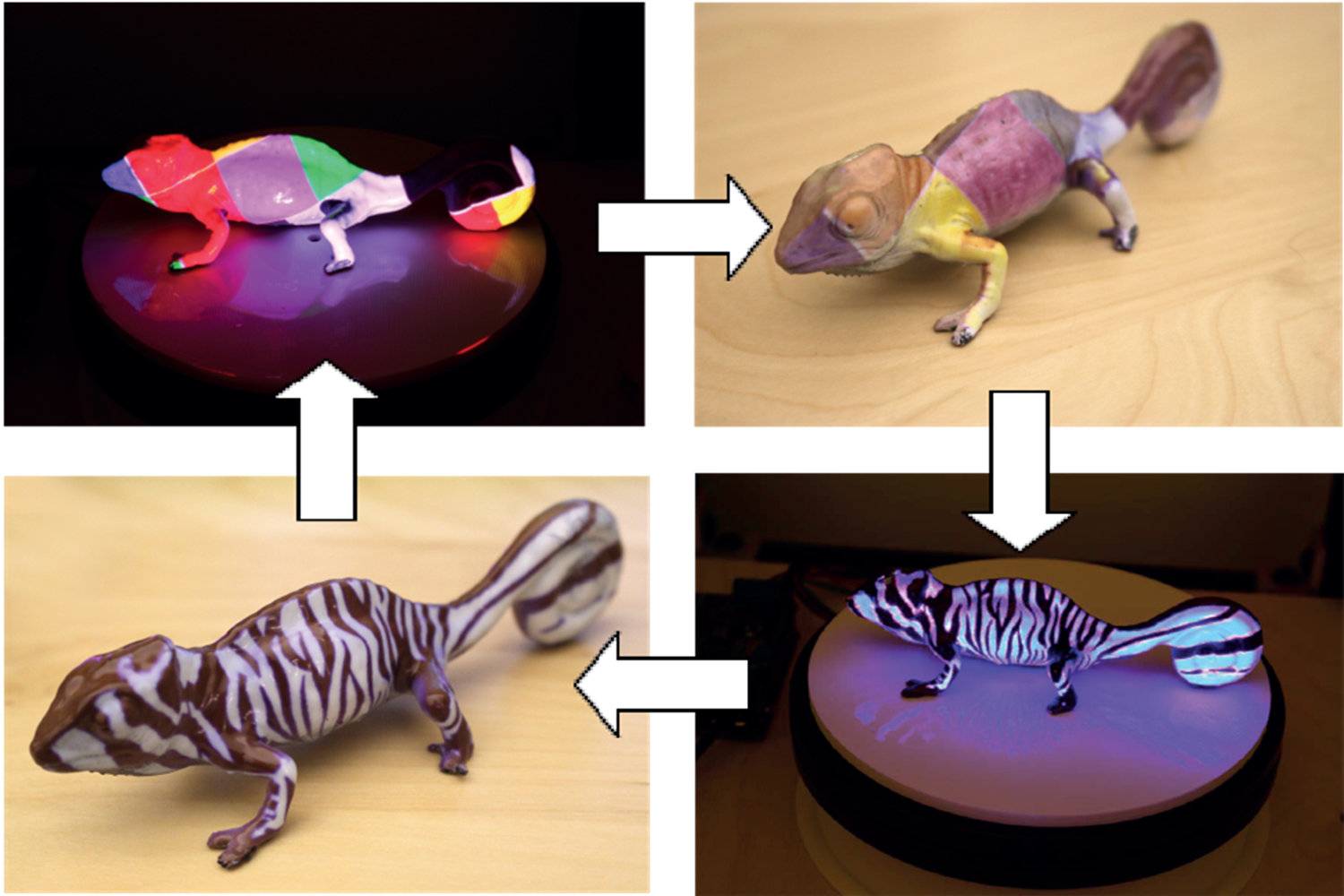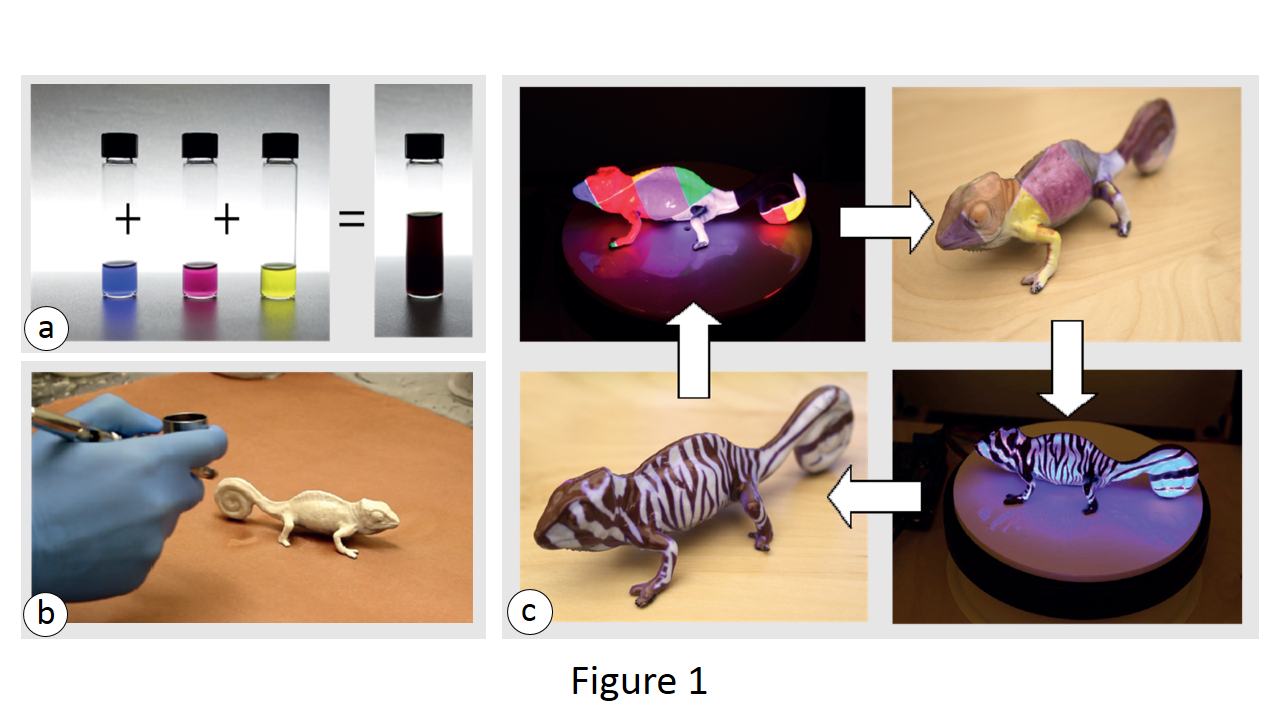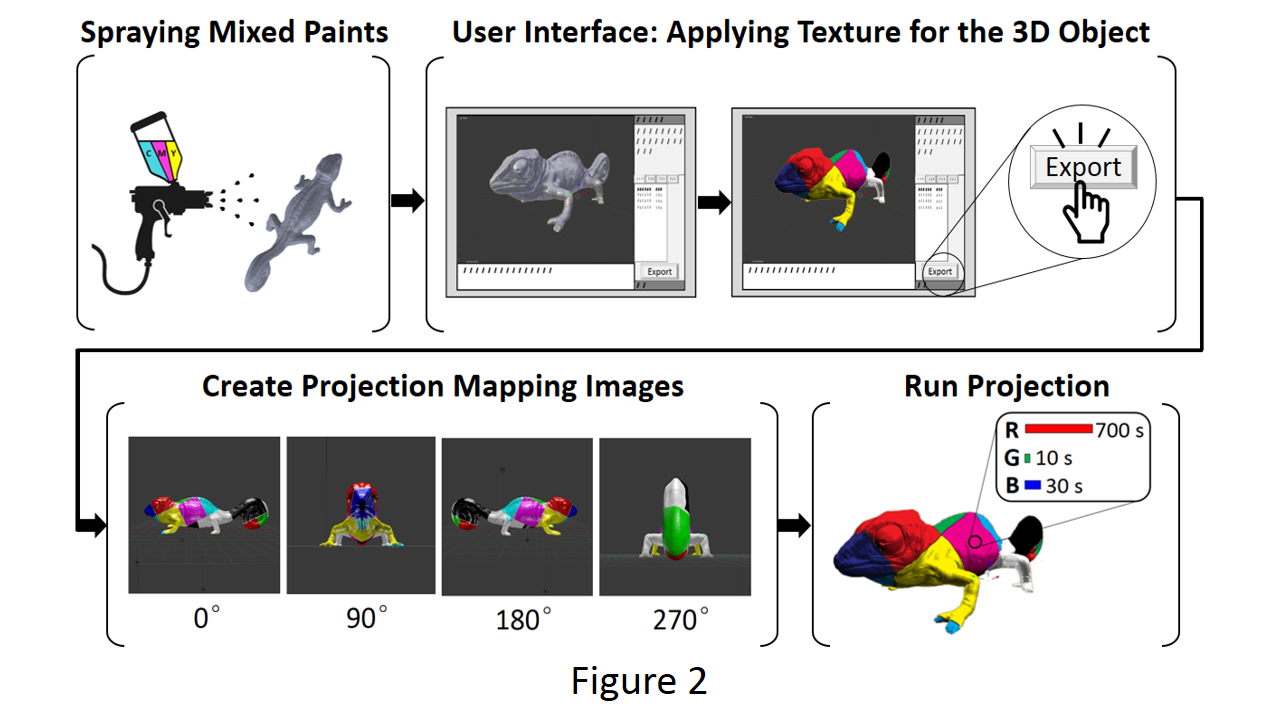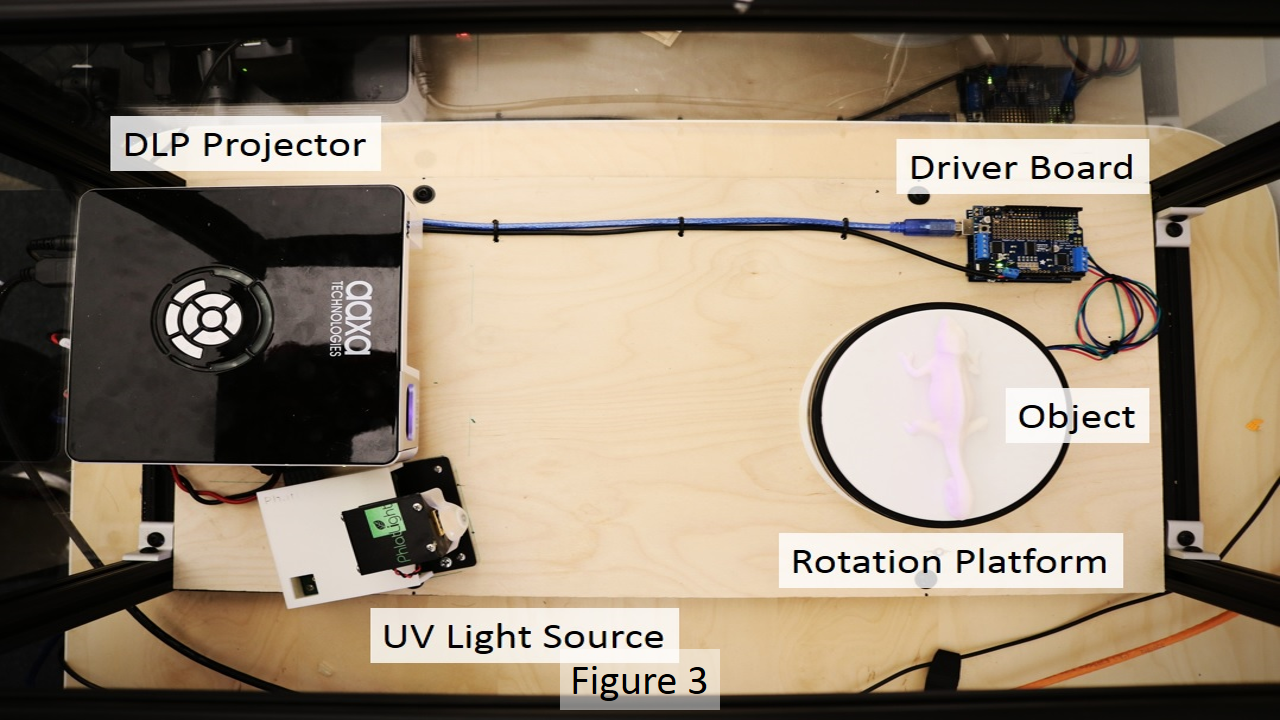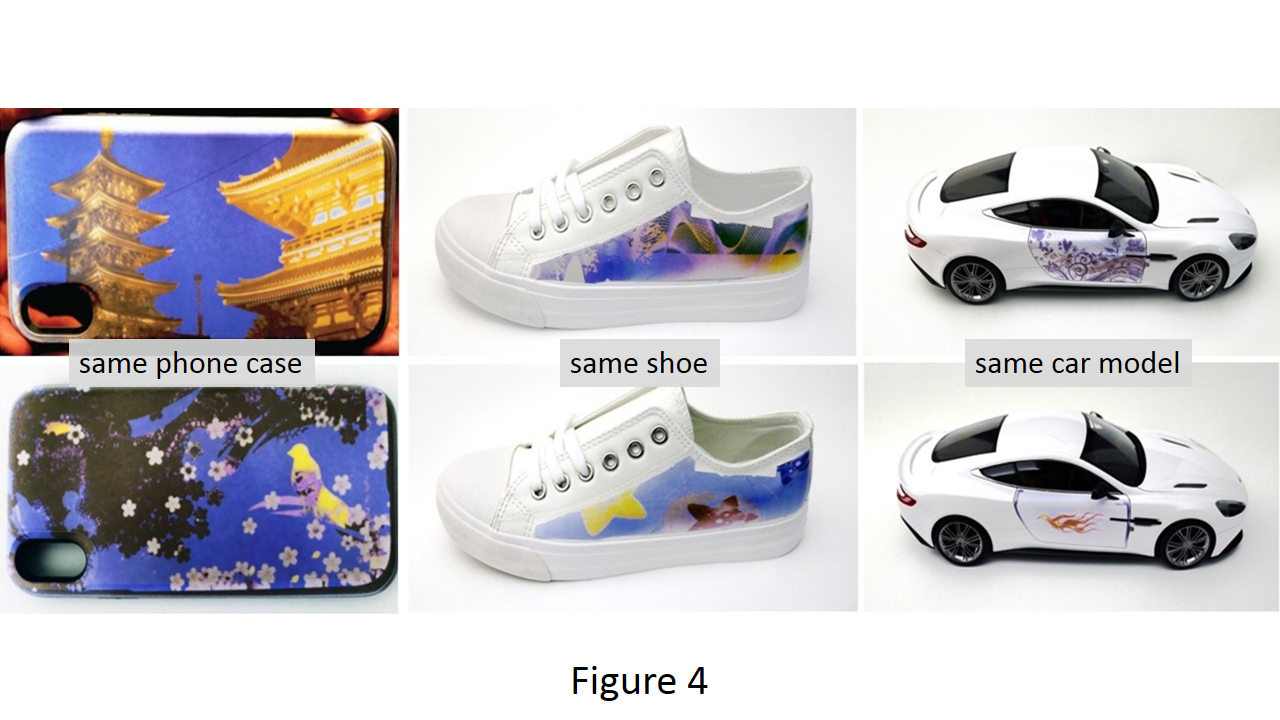Photo-Chromeleon: Re-Programmable Multi-Color Textures Using Photochromic Dyes Massachusetts Institute of Technology
Contributors: Yuhua Jin, Isabel Qamar, Michael Wessely, Stefanie Mueller
Affiliation: MIT CSAIL, Cambridge, MA, USA
Photo-Chromeleon: Re-Programmable Multi-Color Textures Using Photochromic Dyes
1 INTRODUCTION
Programmable matter that has the ability to change its physical properties (color, shape, density) holds the promise of a future in which objects will re-configure themselves according to a user's needs. One aspect of programmable matter is color, which would allow objects to change their appearance repeatedly. For instance, in clothing, accessories could be altered to match the main outfit and textiles could be recolored for different events in the same day. One method to update the appearance of objects is to use photochromic inks that can switch from transparent to colored when exposed to the light of a certain wavelength. Since the inks are bi-stable, the color remains even when the light source is removed. This process is fully reversible, therefore enabling users to recolor the object as many times as they desire. However, a major limitation of using photochromic materials is that they are single-color only, i.e. each material can only transition from transparent to one color and back to transparent. To bypass this limitation, we present an approach that involves mixing cyan, magenta, and yellow photochromic dyes into a single solution, and by leveraging the different absorption spectra of each dye, we can control each color channel in the solution separately. This results in a range of colors across the CMY color space. Since our approach uses only a single solution, we can transform single-material fabrication processes, such as coating, into high-resolution multi-color techniques (Figure 1).
2 END-TO-END SYSTEM
Users spray the photochromic coating onto the surface of a physical object, then use our interface to transfer a digital texture onto the object. Once the desired texture has been determined, the program automatically computes the light projection for the object at different angles. Once the light projection has finished, a new texture will be generated on the surface of the object. The system pipeline is shown in Figure 2.
The hardware setup and component layout are shown in Figure 3. For color initializing, we use a UV light which we can automatically turn on/off using a digital controller. For the light projection, we use a modified DLP projector. For 360° projection on the object, we use a rotating platform that is controlled using a stepper motor. Users place the target object on the top of the platform. The color-changing process then runs automatically.
3 APPLICATIONS
Photo-Chromeleon can be used to customize any object. The pattern produced is erasable and the process can be repeated. Based on this, users can personalize their belongings and appearance on a daily basis, without the need to buy the same object multiple times in different colors and styles. Also, in a showroom or sales scenario, a re-programmable color-changing coating could enable potential buyers to explore different textures or patterns on a product before making a final choice. Based on this technology, We’ve made a range of applications that make use of our ability to reprogram textures on different materials, as shown in Figure 4. This technology could enable users to alter the appearance of their outfits from day to night without the need to carry multiple items. Applying the photochromic coating to a phone case would enable users to apply and change the design or pattern of the casing on a daily basis. Here, we have applied the coating to a phone case. The patterns on the phone case can be re-programmed at will. To demonstrate the application of our coating onto textiles, we also coated our material onto a shoe and successfully changed different textures to match different outfits. In a showroom or sales scenario, a re-programmable color-changing coating could enable potential buyers to explore different textures or patterns on a product before making a final choice. To realize this vision, we sprayed the coating onto a 1/18 scale model of an Aston Martin Vanquish and realized a range of different textures onto it. A re-programmable coating could also be used within the context of car-sharing among multiple users or to display changing advertisements on the car exterior. Other scenarios we envision include large-scale applications, such as entire rooms in which walls or furniture can be re-colored (e.g. using a ceiling-mounted UV/projector system); and dynamic physical visualizations (e.g. a 3D printed earth sphere could update during the day to show changes in weather).
Video distribution
The following videos introduce more details about the theory behind this technology.
-
Full Length Demo Video of Photo-chromeleonView
The demo video shows more details about how we transfer virtual textures onto physical objects. It reveals the related material mixing procedure, the user interface, and several application examples of this technology.
-
Talk Video of Photo-Chromeleon View
This talk video is given by the contributors of Photo-Chromeleon. It's a comprehensive presentation, including the detailed working principle, the material preparation, the programming color procedures, and the future vision of this technology.
